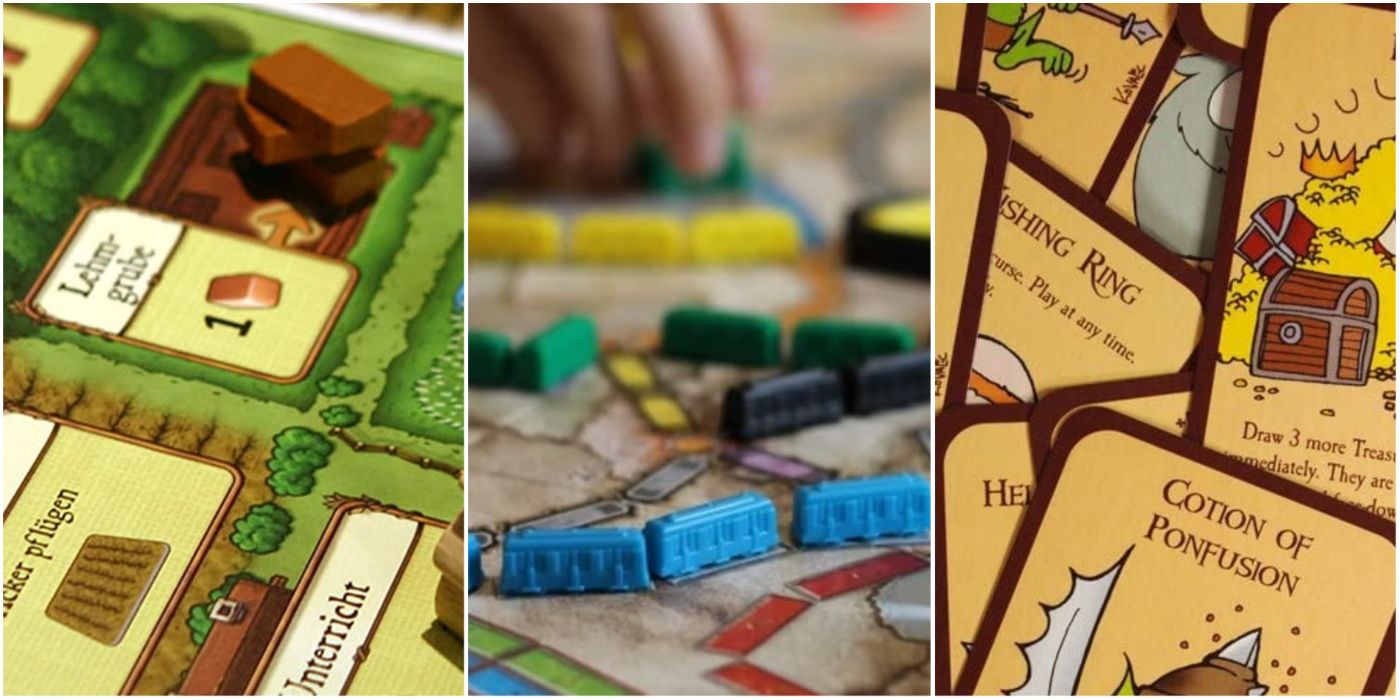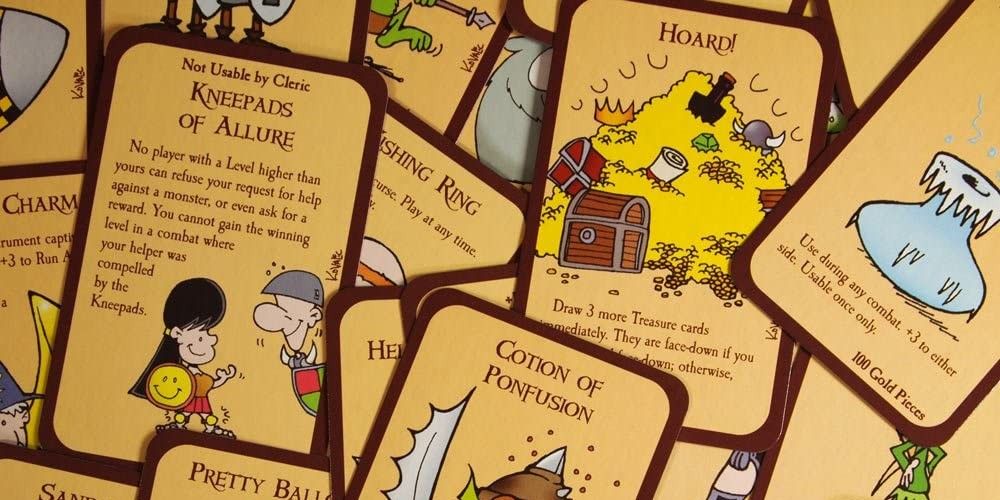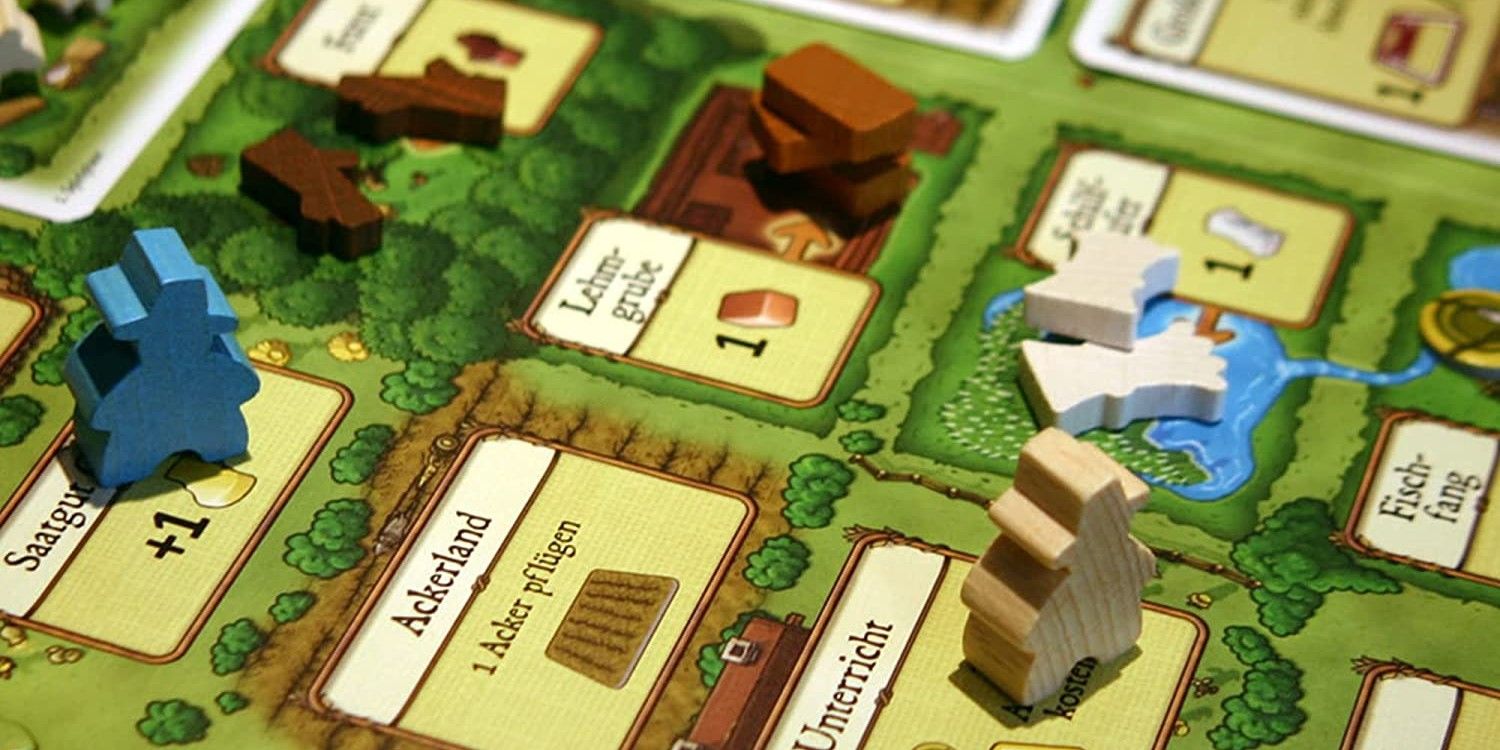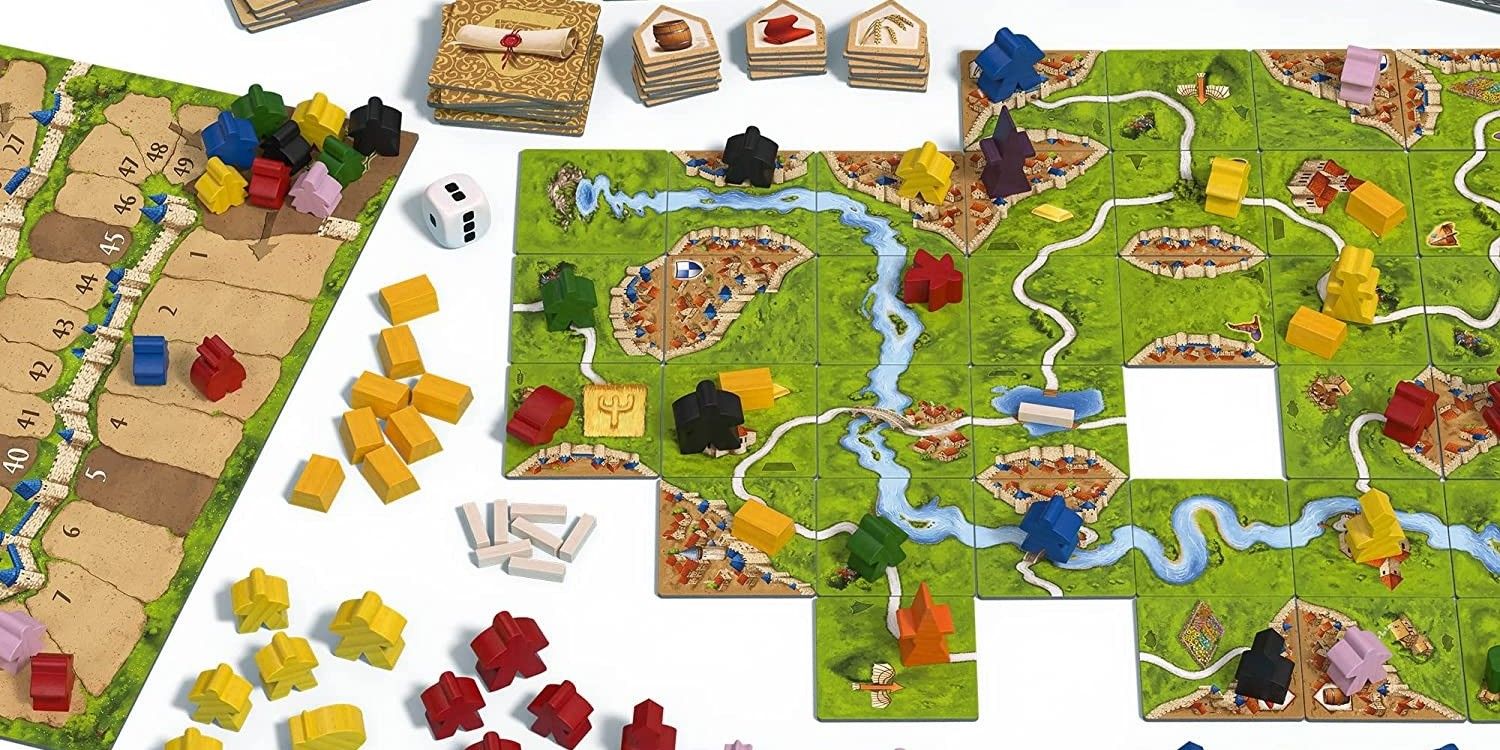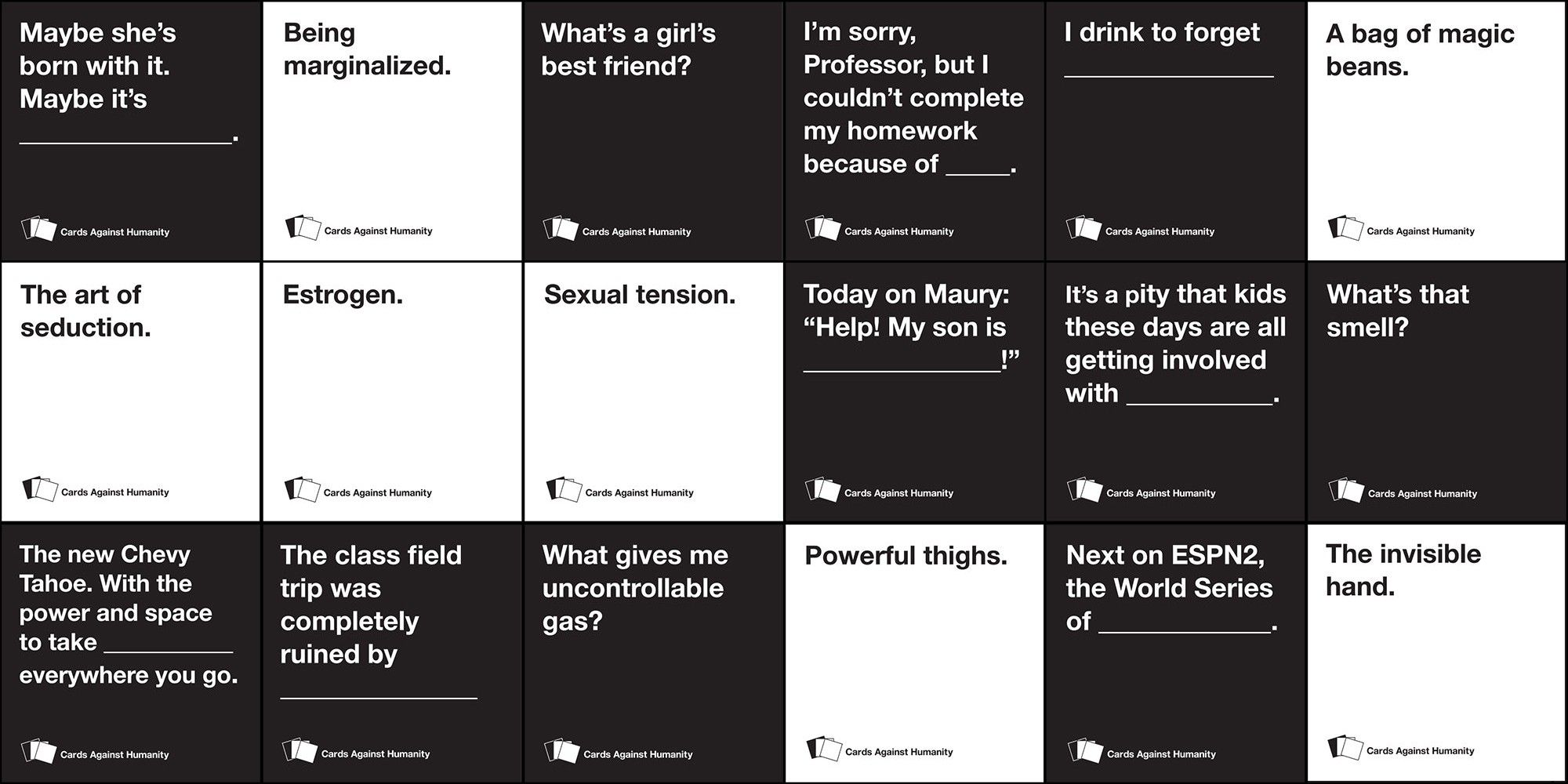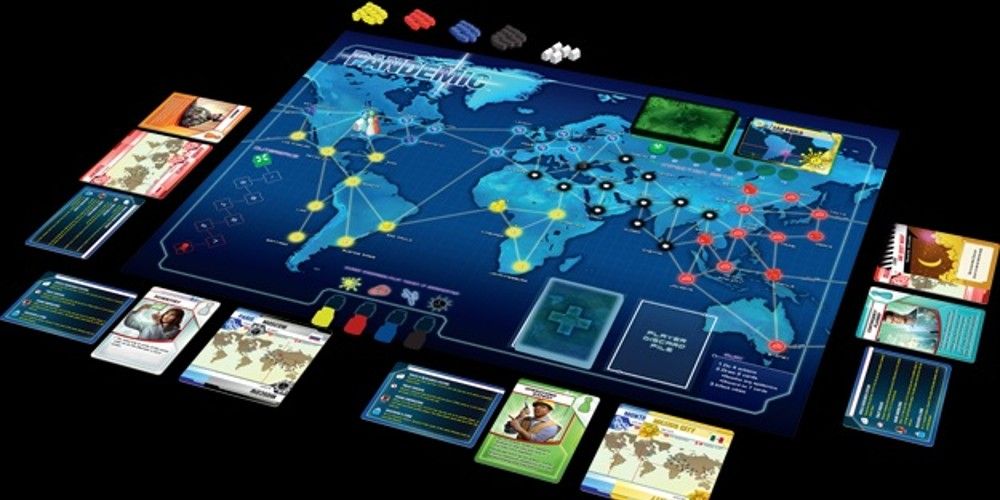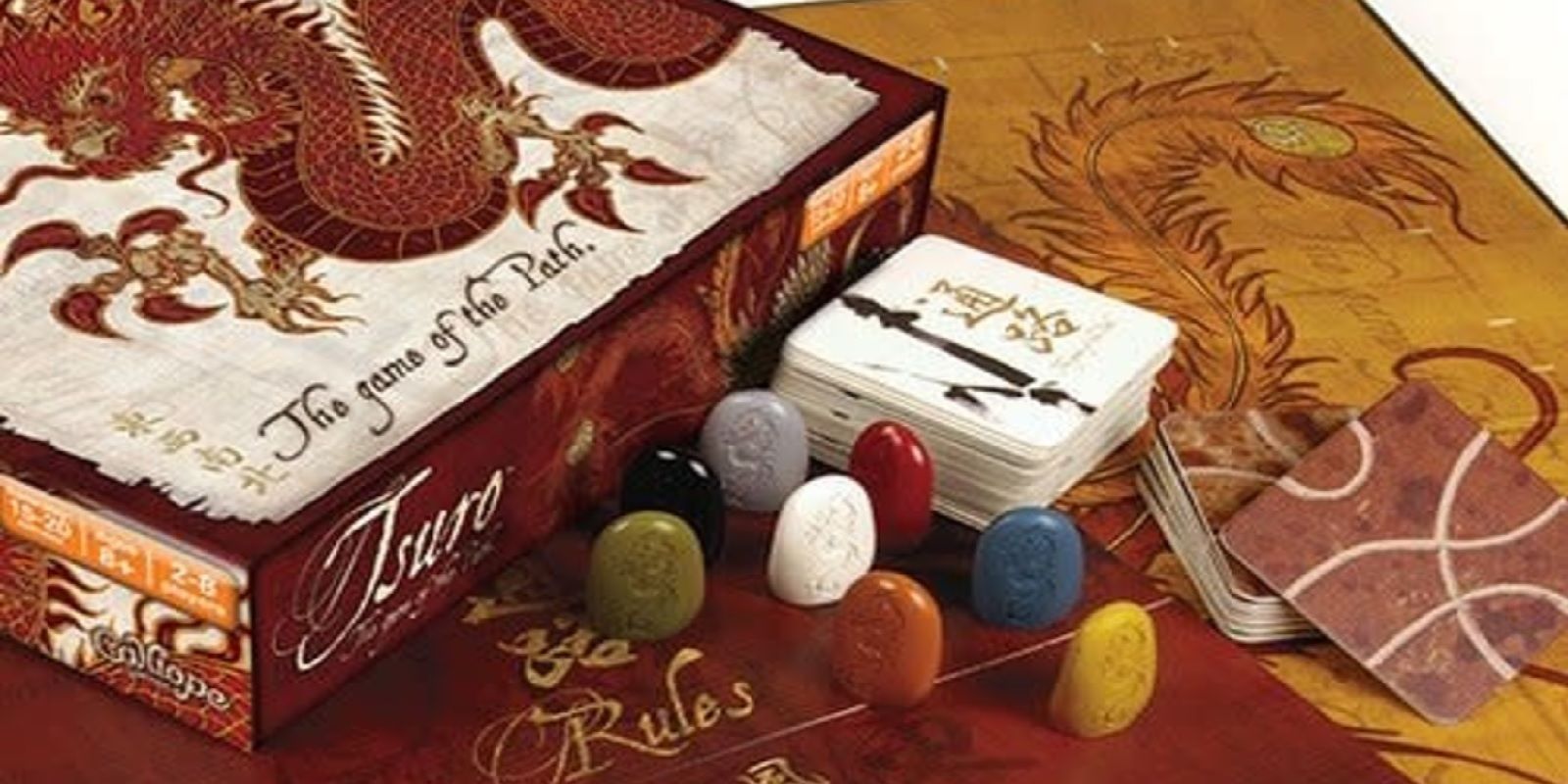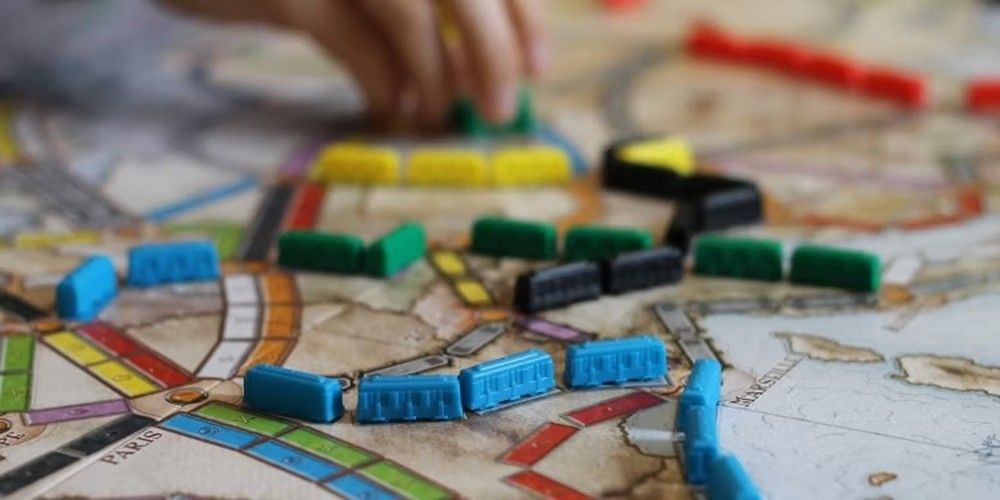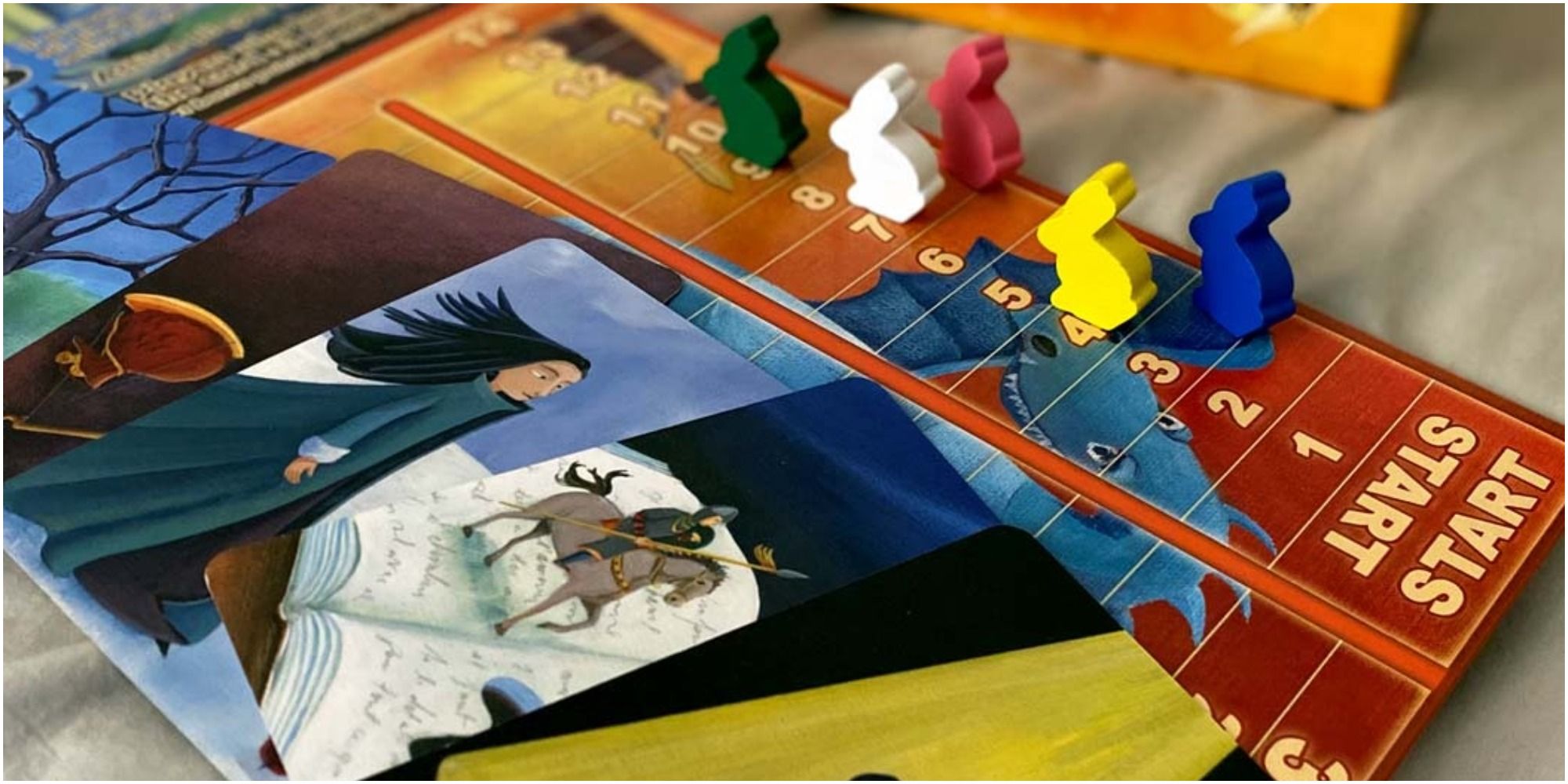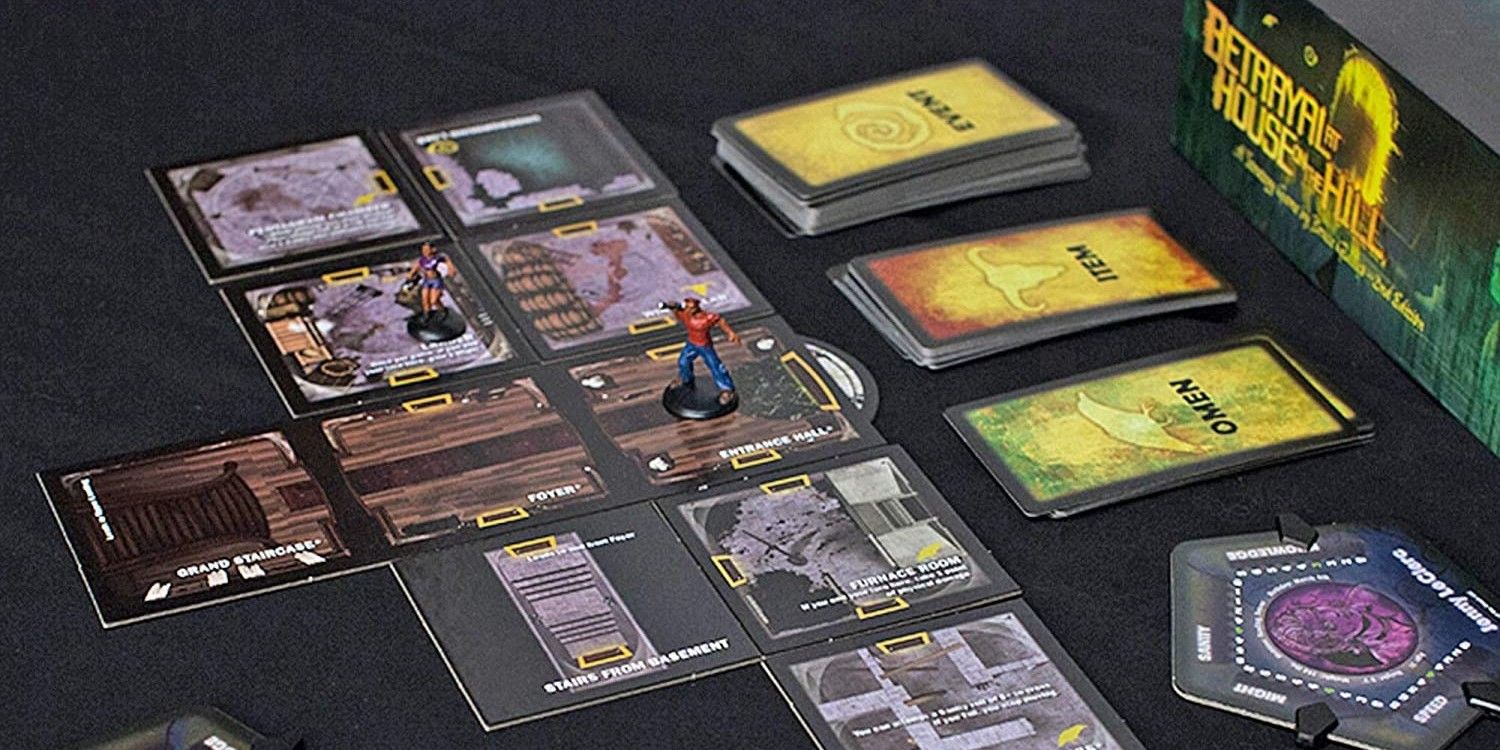Board games, in one form or another, have been a staple of entertainment for thousands of years. Each year, new games emerge from developers' minds, gracing players' shelves and tables with their adventures. By looking back at past decades, fans can see which games thrived and which eventually faded into obscurity.
The 2000s were a transitional time for board games, as more modern games began to make their way into the mainstream consciousness. Many of the best games from the 2000s achieved surprising longevity, still holding their places as popular board games for today's audience.
10 Munchkin Brought Comedy To The Dungeon
There were plenty of tabletop games and board games in the dungeon-crawling realm when the first edition of Munchkin came out in 2001. Munchkin innovated on the formula by taking the inside jokes fans of the genre tossed around and making them an integral part of the game.
Munchkin's voice was that of an amused veteran to dungeoneering who had seen it all before and knew exactly how to play with the system. Even though some board game enthusiasts have grown tired of its presence, Munchkin remained a popular standard on gaming shelves.
9 Agricola Made Farming Popular
Agricola was a hit with the board game community as soon as it was released in 2007. It won its first of many awards that very year, the 2007 Meeple's Choice Award, and it continued earning such accolades until as recently as 2012 when it was nominated for the MinD-Spielepreis award.
Agricola focuses on a turn-based action economy where only one player can take a certain action per round to run and expand their self-sustaining farm. Each player has tokens representing the members of their farm's household, and each token represents an action they can take during each round.
8 Carcassonne Opened Up A World Of Possibilities
After its premiere in 2000, Carcassonne achieved such popularity with gamers that expanded content or additional versions of the game were released every year for the remainder of the decade and onward into the 2010s. This quick-moving game of tile placement and area management had players arranging the medieval French landscape to complete projects and grow their regions.
Players also have the opportunity to sabotage opponents with their actions rather than continue their developments. Gamers continue to recommend Carcassonne for its simple, fast-paced gameplay, beautiful artistry, and abundance of available content.
7 Cards Against Humanity Took The Industry By Storm
Even though elements of it have struggled to age gracefully, it's impossible to deny the incredible impact Cards Against Humanity has had on the board game industry. To this day, it remains incredibly popular with casual players.
While the game mechanic of "applying words or phrases to a certain theme" predates Cards Against Humanity's 2009 release, it popularized the system to the point of it becoming its own genre. Since then, it's spawned an army of themed cards to add to the original deck for a wide variety of player interests.
6 BANG! Brought Hidden Roles To The Wild West
Although hidden-role games had been around since at least the 1980s, when Mafia arrived on the scene, they wouldn't hit their proper popularity stride until the 2010s. In the meantime, BANG! innovated on the genre by bringing the mechanic into a wild west environment.
Most hidden-role games at the time were themed around crime, political rebellion, and the supernatural, as those concepts lend themselves well to that type of gameplay. BANG! took the idea and ran with it, using a hand-management system to determine player actions in this game of old west undercover operations.
5 Pandemic Invoked Real-World Fears
Clearly ahead of its time, Pandemic brought epidemiology to gamers' general consciousness in 2008. In this cooperative game, players had to balance risk with reward as they traveled the world and attempted to cure up to four deadly plagues sweeping the globe.
While all players have access to the same set of basic actions they can take during each turn, each person has their own role, which gives them special abilities they can use to the table's advantage. Even after 14 years on the market, Pandemic and its sequels remain popular with board game enthusiasts and casual players alike.
4 Tsuro Is Simple And Elegant
Tsuro: The Game of the Path is a competitive road-building game published in 2005 where players lay down tiles with pathways for their marker to travel. The goal is to be the last remaining player on the board who doesn't collide with another or fall off the edge.
The game presents itself as a quest, with each path representing the different ways people can reach enlightenment. Tsuro is a fun game with a low learning curve for new players, and its elegant Asian-inspired aesthetic makes it a beautiful addition to any gamer's collection.
3 Ticket To Ride Invited New Players On A Journey
When gamers are asked what titles they would recommend to new board-gamers, they'll often recommend Ticket to Ride. Its appealing colors, simple rules, and addictive gameplay have been the gateway for new fans since 2004.
In Ticket to Ride's first edition, players draw cards to lay train routes along the board's map of the United States, with route cards determining what their goals are. However, they can complete other routes along the way as well. Each route is worth a certain amount of points and, players can earn bonuses for completing other achievements. When the map is full, the player with the most points wins.
2 Dixit Brought Abstract Art To The Table
Dixit, published in 2008, combines tabletop gaming and artistic interpretation in a stunning set of abstract image cards players must make associations with. Each round one player selects a card and gives the rest of the table a hint about it. They must then select a card from their own hand that they think matches the clue.
When all the selected cards have been revealed, each player guesses which one was the original. The board is equally as beautiful as the cards, with another art piece as the backdrop and adorable bunny tokens marking players' points.
1 Betrayal At House On The Hill Took Horror Games To The Next Level
While horror as a genre had been present in board games for generations, Betrayal At House on the Hill raised the bar upon its release in 2004. By including plenty of different scenarios and designing the game to arrive at those scenarios through random chance, the developers gave Betrayal incredible replayability value.
That appeal likely became one of main reasons behind Betrayal's continued success. A fan could have played Betrayal half a dozen times and still not even scratched the surface of the terrors awaiting them in the mansion's halls.

